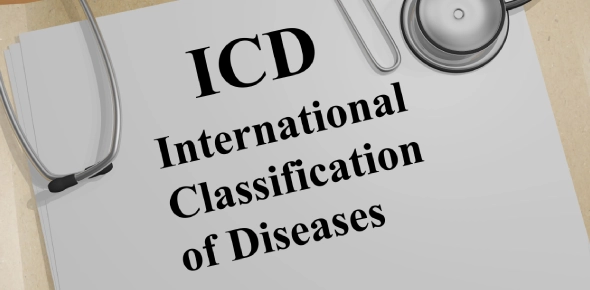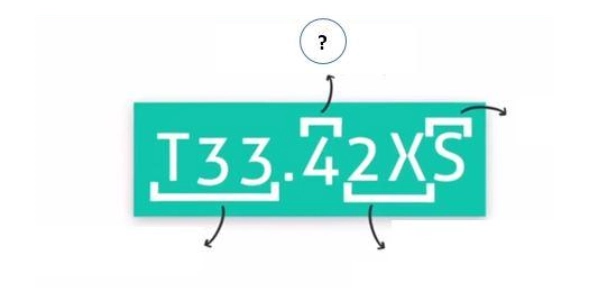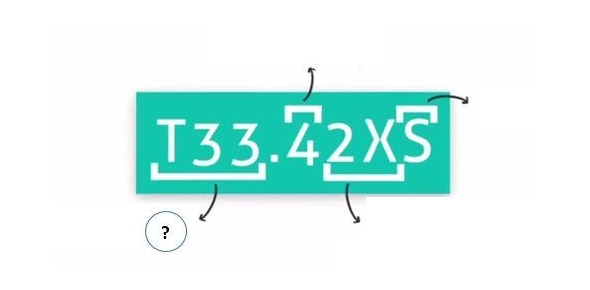ICD 10 Quiz Questions And Answers

The ICD Quiz is an excellent way to test your knowledge of the International Classification of Diseases (ICD). This quiz is designed for students and professionals in healthcare, coding, and related fields. With detailed ICD questions and answers, this quiz explores key topics, such as the structure of ICD codes, their applications in medical diagnosis, and the principles of coding.
The questions are challenging yet informative, ensuring you learn while testing your understanding. If you are preparing for exams or improving your professional skills, this quiz is a valuable resource to enhance your knowledge of the ICD system.
ICD Quiz Questions and Answers
- 1.
Why is ICD-9 being replaced?
- A.
The ICD-9 code set is over 30 years old and has become outdated.
- B.
The ICD-9 code set does not reflect advances in medical technology and knowledge.
- C.
The ICD-9 format limits the ability to expand the code set and add new codes.
- D.
All of the above
Correct Answer
D. All of the aboveExplanation
All of the above reasons contribute to the replacement of ICD-9 with ICD-10. The ICD-9 code set, developed over 30 years ago, has become outdated and does not accommodate the need for more detailed and specific codes to reflect advances in medical technology, procedures, and treatments. Additionally, the structure of ICD-9 limits its expansion, making it difficult to add new codes and keep up with the evolving healthcare landscape. The transition to ICD-10 addresses these issues by providing a more comprehensive and flexible code set, allowing for better data collection, analysis, and improved patient care.Rate this question:
-
- 2.
When is the ICD-10 compliance deadline?
- A.
Dates of Service on or after October 01, 2015
- B.
Dates of Service on or after November 15, 2015
- C.
Dates of Service on or after January 01, 2016
- D.
None of the above
- E.
None of the above
Correct Answer
A. Dates of Service on or after October 01, 2015Explanation
The ICD-10 compliance deadline was set for Dates of Service on or after October 01, 2015. This deadline marked the official transition from the ICD-9 code set to the ICD-10 code set for medical billing and coding in the United States. After this date, healthcare providers, payers, and other covered entities were required to use ICD-10 codes for all medical transactions and insurance claims. The transition to ICD-10 aimed to improve the quality and accuracy of healthcare data, enabling better decision-making and more efficient healthcare services.Rate this question:
-
- 3.
Claims that include an ICD-10 code can be processed before the compliance date.
- A.
True
- B.
False
Correct Answer
A. TrueExplanation
Claims that include an ICD-10 code can be processed before the compliance date because the ICD-10 coding system is an international standard for classifying diseases and medical conditions. Healthcare providers and insurance companies can start using ICD-10 codes before the official compliance date to streamline their processes and ensure accurate billing and reimbursement. This allows for a smoother transition to the new coding system and avoids any delays or disruptions in claims processing.Rate this question:
-
- 4.
What part of the ICD-10 Code is the question mark (?) sitting in?
- A.
Subcategory
- B.
Extender
- C.
Specificity
- D.
Category
Correct Answer
B. ExtenderExplanation
In the ICD-10 coding system, a question mark (?) is often used to indicate an unspecified or placeholder character in a code. Extenders, also referred to as "extensions" or "characters beyond the 4th position," add specificity to the code by providing details about laterality, episode of care, or other clinical information. The extender is part of the latter positions (5th, 6th, or 7th) in an ICD-10 code. Its presence helps coders and clinicians include as much information as possible in a medical diagnosis or procedure code. This makes the extender a key feature for refining coding precision.Rate this question:
-
- 5.
ICD-10 will allow for a higher level of specificity for diagnosis codes.
- A.
True
- B.
False
Correct Answer
A. TrueExplanation
ICD-10, which stands for the International Classification of Diseases, 10th Revision, is a coding system used for diagnosing medical conditions. It provides a more detailed and specific set of codes compared to its predecessor, ICD-9. This allows healthcare professionals to accurately document and communicate diagnoses, leading to improved patient care and better data analysis. Therefore, the statement that ICD-10 will allow for a higher level of specificity for diagnosis codes is true.Rate this question:
-
- 6.
ICD-10 is for use in all U.S. health care settings.
- A.
True
- B.
False
Correct Answer
A. TrueExplanation
ICD-10 is a standardized coding system used by healthcare providers in the United States. It is designed to accurately classify and code diseases, symptoms, and medical procedures, ensuring consistent and accurate documentation across all healthcare settings. Therefore, the statement that ICD-10 is for use in all U.S. health care settings is true.Rate this question:
-
- 7.
All of the NHIC, Corp. DME MAC Local Coverage Determinations (LCDs) and Policy Articles (PAs) that currently contain ICD-9 codes have been updated with ICD-10 codes in preparation for the compliance date.
- A.
True
- B.
False
Correct Answer
A. TrueExplanation
The NHIC, Corp. DME MAC Local Coverage Determinations (LCDs) and Policy Articles (PAs) have been updated with ICD-10 codes in preparation for the compliance date. This means that all the documents that previously contained ICD-9 codes have been revised to include the corresponding ICD-10 codes. Therefore, the statement "True" is correct as it accurately reflects the updated status of the NHIC, Corp. DME MAC LCDs and PAs.Rate this question:
-
- 8.
V procedure codes will still exist in ICD-10. A Z will replace only the V.
- A.
True
- B.
False
Correct Answer
A. TrueExplanation
In ICD-10, procedure codes previously categorized under "V" codes in ICD-9 have been replaced with "Z" codes. These codes are used to describe factors influencing health status and contact with health services, such as vaccinations or follow-up care. The shift from "V" to "Z" aligns with the ICD-10 structure, but the purpose of these codes remains the same.Rate this question:
-
- 9.
The United States is one of the first countries to adopt ICD-10 coding.
- A.
True
- B.
False
Correct Answer
B. FalseExplanation
The given answer is false because the United States was actually one of the last countries to adopt ICD-10 coding. The International Classification of Diseases, Tenth Revision (ICD-10) was implemented in the United States on October 1, 2015, while many other countries had already adopted it years earlier. The delay in adoption was due to various factors, including the complexity of transitioning from the previous coding system (ICD-9) and the need for extensive training and preparation within the healthcare industry.Rate this question:
-
- 10.
What does the "ICD" in ICD 10 Coding stand for?
- A.
Internal Calling Description
- B.
International Classification of Disease
- C.
Internet Checked Diagnosis
- D.
International Career Development
Correct Answer
B. International Classification of DiseaseExplanation
The "ICD" in ICD 10 Coding stands for International Classification of Disease. This coding system is used worldwide to classify and code medical diagnoses, symptoms, and procedures. It provides a standardized way for healthcare professionals to communicate and share information about diseases and health conditions. The ICD coding system is regularly updated to reflect advances in medical knowledge and technology, ensuring accurate and consistent documentation of diseases across different healthcare settings.Rate this question:
-
- 11.
The Extender:
- A.
It can only be a letter.
- B.
It can only be a number.
- C.
It can be a letter or a number.
- D.
None of these
Correct Answer
C. It can be a letter or a number.Explanation
The extender refers to a character that is used to extend the length of a file name. In this case, the correct answer is "Can be a letter or a number" because the extender can be either a letter or a number. This means that when naming a file, the extender can include alphabets or numerical digits, providing flexibility in file naming conventions.Rate this question:
-
- 12.
All existing CMNs need to be revised with ICD-10 codes for claims submitted on or after October 01, 2015.
- A.
True
- B.
False
Correct Answer
B. FalseExplanation
As of October 1, 2015, all healthcare claims in the United States were required to use ICD-10 codes, including those on Certificate of Medical Necessity (CMN) forms. Existing CMNs with ICD-9 codes needed to be updated to ICD-10 to ensure accurate claims processing and compliance with the new coding standard. This transition was essential to avoid claim denials and ensure proper reimbursement under the updated coding system.Rate this question:
-
- 13.
You can not have more than one (1) placeholder in a single diagnosis.
- A.
True
- B.
False
Correct Answer
B. FalseExplanation
False. It is possible to have more than one placeholder in a single diagnosis. This allows for the inclusion of multiple variables or unknown values within the diagnosis, providing a more comprehensive and accurate assessment of the patient's condition.Rate this question:
-
- 14.
Diagnosis coding under ICD-10 uses 3-7 digits.
- A.
True
- B.
False
Correct Answer
A. TrueExplanation
ICD-10 (International Classification of Diseases, 10th Revision) uses alphanumeric codes with 3-7 characters to classify diagnoses and health conditions. The first character is always a letter, followed by digits. The additional characters provide greater specificity and detail about the diagnosis, allowing for more accurate tracking and reporting of health data.Rate this question:
-
- 15.
The first character in any ICD-10 code must be a letter. If it does not start with a letter, the diagnosis code is WRONG.
- A.
True
- B.
False
Correct Answer
A. TrueExplanation
The first character in any ICD-10 code must be a letter. This requirement ensures that the code is valid and follows the standard format. If the code does not start with a letter, it does not meet the necessary criteria and is considered incorrect.Rate this question:
-
- 16.
Claims with dates of service on or after October 01, 2015, that are submitted with ICD-9 Codes and are rejected must be:
- A.
Resubmitted with the correct ICD-10 code
- B.
Reopened
- C.
Appealed
- D.
All of these
Correct Answer
A. Resubmitted with the correct ICD-10 codeExplanation
Claims with dates of service on or after October 01, 2015, that are rejected due to the use of ICD-9 Codes should be resubmitted with the correct ICD-10 code. This is because ICD-10 codes became mandatory for use in healthcare claims after this date. Reopening or appealing the rejected claim may not be necessary if the correct ICD-10 code is provided in the resubmission.Rate this question:
-
- 17.
There are approximately 14,000 available codes for ICD-9; how many codes are available for ICD-10?
- A.
Approximately 20,000
- B.
Approximately 50,000
- C.
Approximately 70,000
- D.
Approximately 80,000
Correct Answer
C. Approximately 70,000Explanation
ICD-10 has a significantly larger number of available codes compared to ICD-9. With approximately 70,000 codes, it offers a more comprehensive and detailed classification system for medical diagnoses and procedures. This increase in codes allows for greater specificity in documenting and analyzing healthcare data, leading to improved accuracy in billing, research, and overall patient care.Rate this question:
-
- 18.
The ICD-9 code for Tracheostomy's initial opening is V44.0. Under the new coding system of ICD-10, the code will now be Z93.0 Tracheostomy Status.
- A.
True
- B.
False
Correct Answer
A. TrueExplanation
Under the new coding system of ICD-10, the code for Tracheostomy's initial opening has changed from V44.0 to Z93.0 Tracheostomy Status. This change reflects the update in the classification system and ensures more accurate and detailed documentation of the patient's medical condition.Rate this question:
-
- 19.
Which of the following is not a new piece of information provided by ICD-10?
- A.
Location on the body
- B.
Related conditions
- C.
Causes
- D.
All are new
Correct Answer
D. All are newExplanation
ICD-10 offers significant enhancements over ICD-9, including detailed information about the location of injuries or conditions on the body, associated or related conditions, and potential causes. These improvements provide more specificity for diagnosis and treatment coding. Since all the listed options represent areas where ICD-10 introduced new data, none of them can be excluded. Therefore, the correct answer is "All are new." This level of detail supports better patient care, improved data tracking, and enhanced research capabilities.Rate this question:
-
- 20.
True or False: An ICD-9 code can only have a maximum of 10 corresponding ICD-10 codes.
- A.
True
- B.
False
Correct Answer
B. FalseExplanation
An ICD-9 code can have more than 10 corresponding ICD-10 codes. The ICD-10 coding system provides a more detailed and specific classification of diseases and medical conditions compared to ICD-9. Therefore, it is possible for a single ICD-9 code to have multiple corresponding ICD-10 codes, allowing for greater precision in medical coding and documentation.Rate this question:
-
- 21.
ICD-9 Codes have a maximum of 5 characters. What is the maximum number of characters for ICD-10 codes?
- A.
10
- B.
5
- C.
7
- D.
9
Correct Answer
C. 7Explanation
ICD-10 codes have a maximum of 7 characters, which is different from ICD-9 codes that have a maximum of 5 characters. This means that ICD-10 codes can include more detailed information and provide a more specific classification for medical diagnoses and procedures. The additional characters in ICD-10 codes allow for greater specificity in capturing the complexity of various health conditions and treatments.Rate this question:
-
- 22.
What part of the ICD-10 code is the question mark (?) sitting in?
- A.
Subcategory
- B.
Specificity
- C.
Category
- D.
Extender
Correct Answer
C. CategoryExplanation
The question mark (?) in the ICD-10 code is sitting in the category. The category is the broadest level of classification in the ICD-10 coding system, organizing diseases and related health conditions into major groups. The question mark indicates that a specific code is not available or has not been assigned yet within that category.Rate this question:
-
- 23.
When you see an "X" in an ICD-10 Code, it is being used as a placeholder for that digit and will be used for future code expansion.
- A.
True
- B.
False
Correct Answer
A. TrueExplanation
The "X" in an ICD-10 code is a placeholder used to ensure that the code maintains the proper structure for future updates and expansions. ICD-10 codes require specific formats, such as a particular number of characters in certain positions. When there isn't current data or specificity to fill that position, the "X" serves as a placeholder to keep the code's structure intact. This design allows for the seamless addition of new codes or updates in the future without altering the overall system. Thus, the "X" is a critical element for flexibility and future-proofing the coding system.Rate this question:
-
- 24.
What part of the ICD-10 Code is the question mark (?) sitting in?
- A.
Category
- B.
Subcategory
- C.
Extender
- D.
Specificity (Location and Laterality)
Correct Answer
D. Specificity (Location and Laterality)Explanation
The question mark (?) is sitting in the "Specificity (Location and Laterality)" part of the ICD-10 Code. This part of the code is used to provide additional details about the location and side of the body where a condition or disease is present. The question mark indicates that the specific location or laterality is unknown or not specified. The ICD-10 Code system allows for greater precision and accuracy in medical coding by including this level of detail.Rate this question:
-
- 25.
What does the seventh character in an ICD-10 code primarily represent?
- A.
Type of encounter
- B.
Location of injury
- C.
Severity of condition
- D.
Placeholder for future use
Correct Answer
A. Type of encounterExplanation
The seventh character in an ICD-10 code primarily represents the "type of encounter." This indicates the stage of treatment or the specific nature of the patient’s interaction with the healthcare system. Common examples include "A" for the initial encounter, "D" for subsequent encounters, and "S" for sequela (complications or conditions that arise as a direct result of an injury or illness). It provides crucial details about the care stage, helping medical professionals track progress and determine appropriate treatment. The seventh character ensures the code is complete and aligns with the specific clinical situation, contributing to accurate documentation and billing.Rate this question:
-
Quiz Review Timeline +
Our quizzes are rigorously reviewed, monitored and continuously updated by our expert board to maintain accuracy, relevance, and timeliness.
-
Current Version
-
Jan 22, 2025Quiz Edited by
ProProfs Editorial Team -
Aug 20, 2015Quiz Created by
Patt
 Back to top
Back to top





